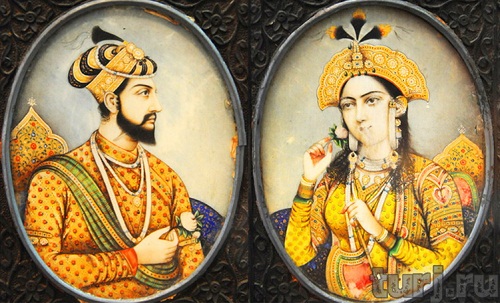Mumtaz Mahal Love Story
This article provides information about Taj Mahal love story. Read on to know about the true story of Taj Mahal in Agra city of India. The Construction Of Taj Mahal – Love Story Of Mumtaz And Shah Jahan. Taj Mahal took twenty – two years to get completely furnished and ready to be showcased to the world, the great mausoleum was an example of hard work of twenty.

Shah Jahan And Mumtaz Mahal Love Story Video
Contents • • • The Taj Mahal is an enormous mausoleum complex commissioned in 1632 by the Mughal emperor Shah Jahan to house the remains of his beloved wife. Constructed over a 20-year period on the southern bank of the Yamuna River in Agra, India, the famed complex is one of the most outstanding examples of Mughal architecture, which combined Indian, Persian and Islamic influences. At its center is the Taj Mahal itself, built of shimmering white marble that seems to change color depending on the daylight. Designated a UNESCO World Heritage site in 1983, it remains one of the world’s most celebrated structures and a stunning symbol of India’s rich history. Shah Jahan Shah Jahan was a member of the Mughal dynasty that ruled most of northern India from the early 16th to the mid 18th-century. After the death of his father, King Jahangir, in 1627, Shah Jahan emerged the victor of a bitter power struggle with his brothers, and crowned himself emperor at Agra in 1628.
In all, more than 20,000 workers from India, Persia, Europe and the, along with some 1,000 elephants, were brought in to build the mausoleum complex. Design and Construction of the Taj Mahal Named the Taj Mahal in honor of Mumtaz Mahal, the mausoleum was constructed of white marble inlaid with semi-precious stones (including jade, crystal, lapis lazuli, amethyst and turquoise) forming intricate designs in a technique known as pietra dura.
Love Story Lyrics
Its central dome reaches a height of 240 feet (73 meters) and is surrounded by four smaller domes; four slender towers, or minarets, stood at the corners. In accordance with the traditions of, verses from the Quran were inscribed in calligraphy on the arched entrances to the mausoleum, in addition to numerous other sections of the complex. Inside the mausoleum, an octagonal marble chamber adorned with carvings and semi-precious stones housed the cenotaph, or false tomb, of Mumtaz Mahal.
Mumtaz Mahal Love Story
The real sarcophagus containing her actual remains lay below, at garden level. The rest of the Taj Mahal complex included a main gateway of red sandstone and a square garden divided into quarters by long pools of water, as well as a red sandstone mosque and an identical building called a jawab (or “mirror”) directly across from the mosque. Traditional Mughal building practice would allow no future alterations to be made to the complex. As the story goes, Shah Jahan intended to build a second grand mausoleum across the Yamuna River from the Taj Mahal, where his own remains would be buried when he died; the two structures were to have been connected by a bridge. In fact, Aurangzeb (Shah Jahan’s third son with Mumtaz Mahal) deposed his ailing father in 1658 and took power himself. Shah Jahan lived out the last years of his life under house arrest in a tower of the Red Fort at Agra, with a view of the majestic resting place he had constructed for his wife; when he died in 1666, he was buried next to her.